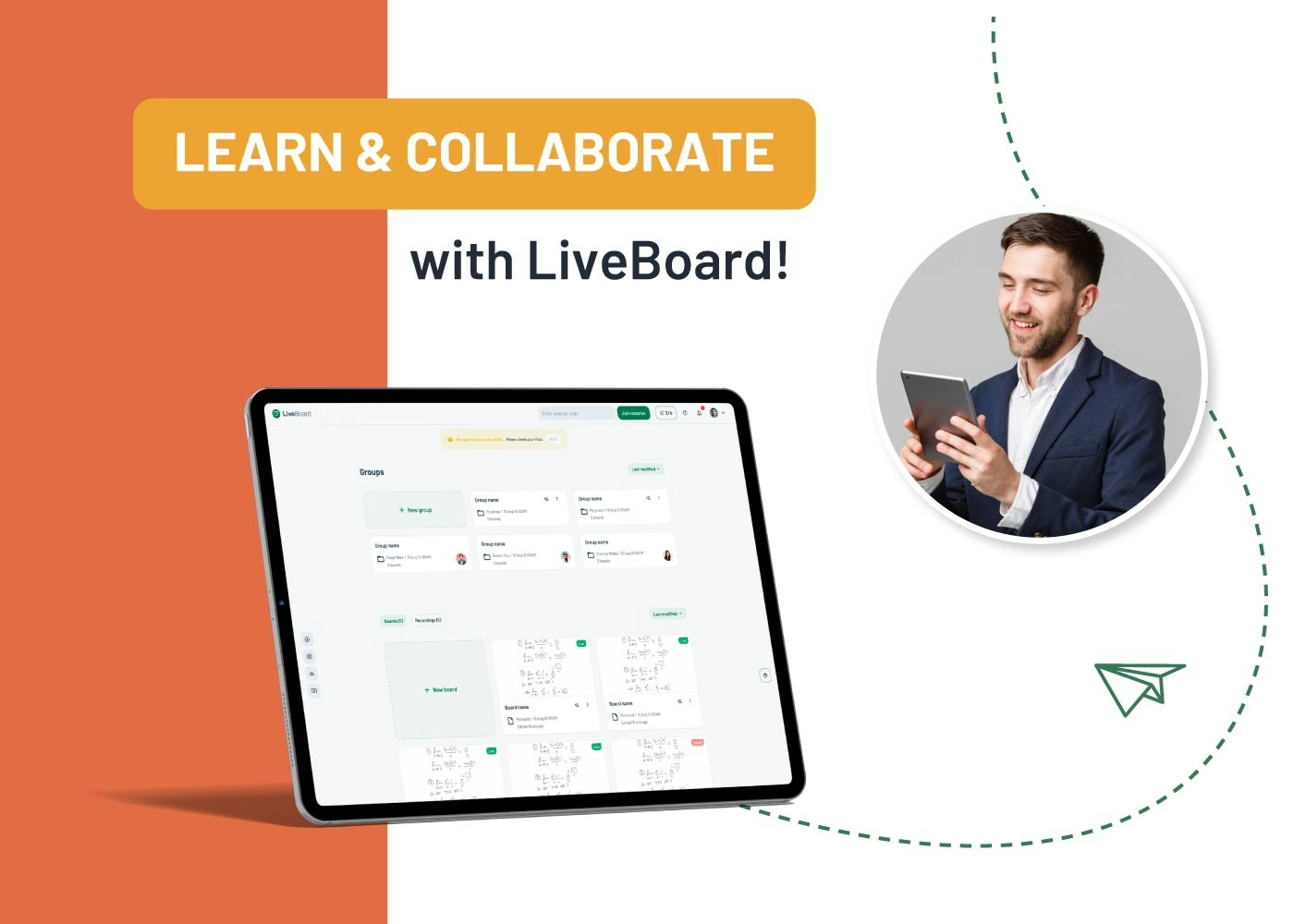The necessity of online learning has been more relevant in recent years than ever before. With the outbreak of COVID-19 and its effects on the world education system, many teachers have shifted to remote classes. As such, teaching online can be challenging, and it is more so for math. With a lack of vital tools and resources, it can be tough to keep everyone on track. On top of that, the experience compared to in-person classes differs a lot, and studies might suffer if you’re not doing things right. So, here we have gathered five tips that may help you make teaching math in a distance more productive.
1. Use a Virtual Whiteboard
There are many online whiteboard tools available for free. These virtual whiteboards are a great way to supplement your online teaching. They provide a space for you to write out equations and problems, as well as draw diagrams. This can be very helpful for your students when trying to follow along at home.

LiveBoard is an excellent example of a virtual collaborative whiteboard that can be used to draw, write, and collaborate interactively with your students in real-time. It also has many features like live quizzes, graph editors, and the option to upload images and pdf files that can help make teaching math more fun and interactive. Not only that, you can record classes and make videos that can help explain the material better or serve as notes for future reference.
2. Create a Schedule and Set Expectations
Set a schedule and expectations for both you and your students. This will help create structure and routine, which can be very beneficial, especially for young learners, as they might get used to the comfort of their sofa pretty easily. Let your students know what days and times the class will be held as well as what they need to have ready for each class.
Depending on the state and level of your students, you may want to try various methods and strategies to help them meet high standards, such as increasing rigor in math or promoting productive struggle.
It is also essential to set expectations for yourself. This includes having all the material and resources you need for the class as well as being prepared mentally. Teaching remotely can be taxing, so it is crucial to take care of yourself and make sure you are in the right headspace before each class.
One way to do this is by setting aside some time before each class to review the material and go over any questions you may have. This will help ensure that you are prepared for the class and can answer any questions that come up.
3. Use Other Online Tools and Resources
When teaching math online, it is essential to use a variety of tools and resources. This will help keep your students engaged and interested in the material. There are many great online resources available that can be used to supplement your instruction.
One example is Khan Academy, which offers free math lessons and practice problems for students of all ages. They also have a variety of other resources, such as videos and articles, that can be used to supplement your instruction.
Another excellent resource is IXL Math, which offers interactive math practice for grades K-12. They have a wide range of topics covered and also offer assessment tools to help track student progress.
AllMath is another math resource that offers 400+ calculators to solve numerical problems with steps. Each kind of mathematics tool is present on this site to help the students, such as geometry, calculus, trigonometry, algebra, etc.
Using a variety of resources is a great way to keep your students engaged and interested in the material. It also allows you to cater to different learning styles and needs.

4. Get Creative with Your Teaching
It is essential to get creative with your instruction when teaching math in a distance. This means thinking outside the box and coming up with new and innovative ways to teach the material. There are many great ways to do this, such as using games, puzzles, and other interactive activities, especially with younger learners.
One way to get creative is by incorporating games into your instruction. This can be done by creating your own games or using ones that are already available online. Games are a great way to make learning fun and interactive.
Another way to get creative is by using math-related puzzles and brainteasers. These are excellent ways to challenge your students and help them think outside the box. Puzzles and brainteasers also help promote critical thinking and problem-solving skills.
5. Be Patient and Flexible
It is equally essential to be patient and flexible. This means being understanding when things don’t go as planned and being willing to adjust your instruction accordingly. It is also important to remember that not every student learns at the same pace.
Some students may need more time to process the material, while others may grasp it quickly. It is essential to be patient and flexible with your students. This will help ensure that everyone is able to understand the material and stay on track.
Conclusion
Teaching math in a distance can be a challenge, but it is also an excellent opportunity to get creative and connect with your students in new ways. You can make the most of your experience and help your students succeed by following these tips.


